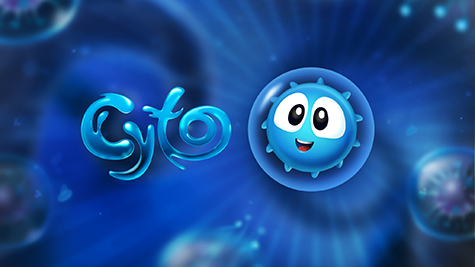As the Executive Director and Head of Publishing at 6waves, Stephen Lee spends his days speaking with developers from all over the world. And, while 6waves is one of the leading global publishers of independent social and mobile games, each developer may bring very different games, experiences, skills, resources, and needs to the publishing discussion. He says, “Having the flexibility to adjust to your partners, understand their situation, and come up with ideas that best address their needs, while still making business sense to all parties, is key.”
He maintains that flexibility is also the key to succeeding in all aspects of the games industry, since the industry changes more rapidly than most. Unless companies and individuals can adjust and pivot quickly, they won’t survive.
For the Love of Games
On a typical day at 6waves, Lee spends time with the team identifying high-potential games to approach for publishing, planning for the upcoming games in the pipeline, and exploring how to help the existing publishing portfolio. And they all spend time testing games that are being considered for publishing, although Lee has had to cut back on this lately.
Gaming is not yet an established industry in Hong Kong, but it is growing steadily. Hong Kong is on an island, both literally and figuratively, so Lee is usually talking with people remotely using conference calls or Skype. As a result, he feels the best part of his job is traveling and participating in game shows, where he can meet others in the industry, catch up with peers in person, meet one-on-one with developers, and get a firsthand look at what is happening in the industry. He insists, “Any time I’ve had the pleasure of meeting developers that have worked on games I have enjoyed on a personal level is gravy on top!”
Lee has been a gamer as long as he can remember, but, with very strict parents, any time he was allowed to play was a special treat. And the love of games has stayed with him to this day. After working in Asia for 10 years, he knew he wanted to be a part of an industry he felt genuinely passionate about. The opportunity at 6waves came at just the right time, and he seized it.
Working in the Industry
At 6waves, he began on the business development team doing work similar to what he had done in his previous careers. Since then, he has had the opportunity to learn a great deal from colleagues and peers in the industry, especially about game development and product management. He emphasizes, “We’re very lucky to be working in a field with so many talented people. It’s non-stop learning and somewhat awe-inspiring. So I leverage my position to broaden my game knowledge as best I can.”
Now, Lee leads the 6waves publishing business for both social and mobile games, which includes the business development, product management, localization, customer service and community management teams.
Lee believes the greatest challenge facing the games industry today is discovery. Technology is evolving and game experiences continue to improve, but most games will not reach a meaningful number of players in a cost-effective manner. Although he sees no easy or simple fix to the problem, there are a number of factors that may help: improvements by platforms to more easily surface relevant and quality content to their customers, growth of cross-platform technologies to make games more readily available on as many consumer touch-points as possible, evolution of successful publishers to help with the scale and services developers need, and innovation by developers to bring more unique and interesting games and ideas to the market.
The Perks of a Publisher
A developer should always keep an open mind to consider publishing support in some fashion or another, Lee maintains. There are large developers in the industry with the resources to successfully launch a game worldwide, but no one company is best at every game genre or in every language and market. If the business terms make sense and both partners are committed to success, developers may achieve much more with a publishing partner that has specific areas of strength than they could realize on their own.
In today’s challenging climate for games, with the console market share shrinking and platforms becoming saturated, developers are left hoping for the next big hit or relying on work-for-hire projects. Not every game can be a hit, but publishers can help developers reduce risks by fronting marketing costs, providing advances to help developers recoup their investment or improve their cash flow, and, in some cases, funding projects altogether.
Lee points out that, although developers can raise funds from more sources than ever before, experienced publishers have established networks and a wealth of experience with optimizing games. So publishers can help developers market their games more efficiently, as well as target and retain users with better LTV.
He also realizes that most developers want to focus their time and energy on making great games. With their existing infrastructure and experience, publishers can help look after all the other things developers may not have budget, bandwidth or desire to handle, such as Live Ops, QA, Customer Service, Community Management, Localization, Hosting and others.
When building a relationship with partners, Lee listens carefully while reminding himself that developers put their all into making great games: time, energy, blood, sweat and tears. He says, “If developers put their trust into 6waves as their publishing partner, we owe them the same level of trust and commitment, and that means delivering the best quality service and giving their games the best opportunities to succeed.”
The Future
Lee believes the future of the games industry will see the growth of cross-platform games continuing, and most high quality games launching with a multi-platform, multi-device strategy. Already, some console titles are on mobile, and as this trend continues, gamers will be able to continue playing their favorite game wherever they are.
He has noticed considerable hype around the increased penetration of smart phones and wearable tech, but insists, “What’s largely missing in this discussion is that software will be just as important to success as hardware or the form factor. There will be a lot of people throwing their hats into the space, but after some shaking out, the cream will rise to the top. Hopefully, this will lead to more platforms for games to take off on.”
He also sees social elements continuing to be important factors in the most successful games, although, ironically, this usually leads to players being less social in the real world.
Looking at Asia
For developers to get the most mileage from their games, they need to carefully consider Asia, according to Lee. 6waves has an office with a large number of different nationalities, and a strong and diverse mix of cultural influences. This has served them well in building their global audience and helping developers to bridge the gap between East and West. People tend to think of Asia as a single region, but there are important cultural sensitivities between each Asian country and language.
Lee points to China as an example of how complex this situation is. For a developer to localize a game properly for the Chinese audience, they would first have to localize the language to Simplified Chinese for players in Mainland China. They also need to localize into Traditional Chinese for players in Hong Kong and Taiwan, but the spoken language of the characters is completely different in these two regions, Cantonese in Hong Kong and Mandarin in Taiwan. And each market has unique cultural references and slang. Most likely, the graphics would have to be changed to make the characters more appealing and features added to cater the gameplay to local audiences. It’s more than localization; it’s culturalization.
Asia is huge from a revenue perspective, but it is fragmented. Lee insists, “To really get the most from their games, developers should have a publisher willing to drill down to this detailed level, not only with localization, but also with online and offline marketing; this operates differently from other parts of the world.”
This is the area 6waves is focusing on, believing it is how they can help developers the most. They have local teams in the largest Asian mobile markets, strong relationships with local platforms, and an established publishing track record. Lee believes 6waves is in a great position to become the go-to partner for local publishing in Asia.
Stephen Lee will be discussing what developers should keep in mind when getting ready to launch and grow their games globally during Casual Connect Asia 2014. Find out more about his session on the conference website.










